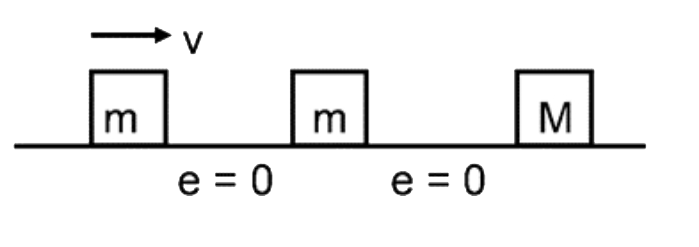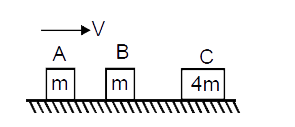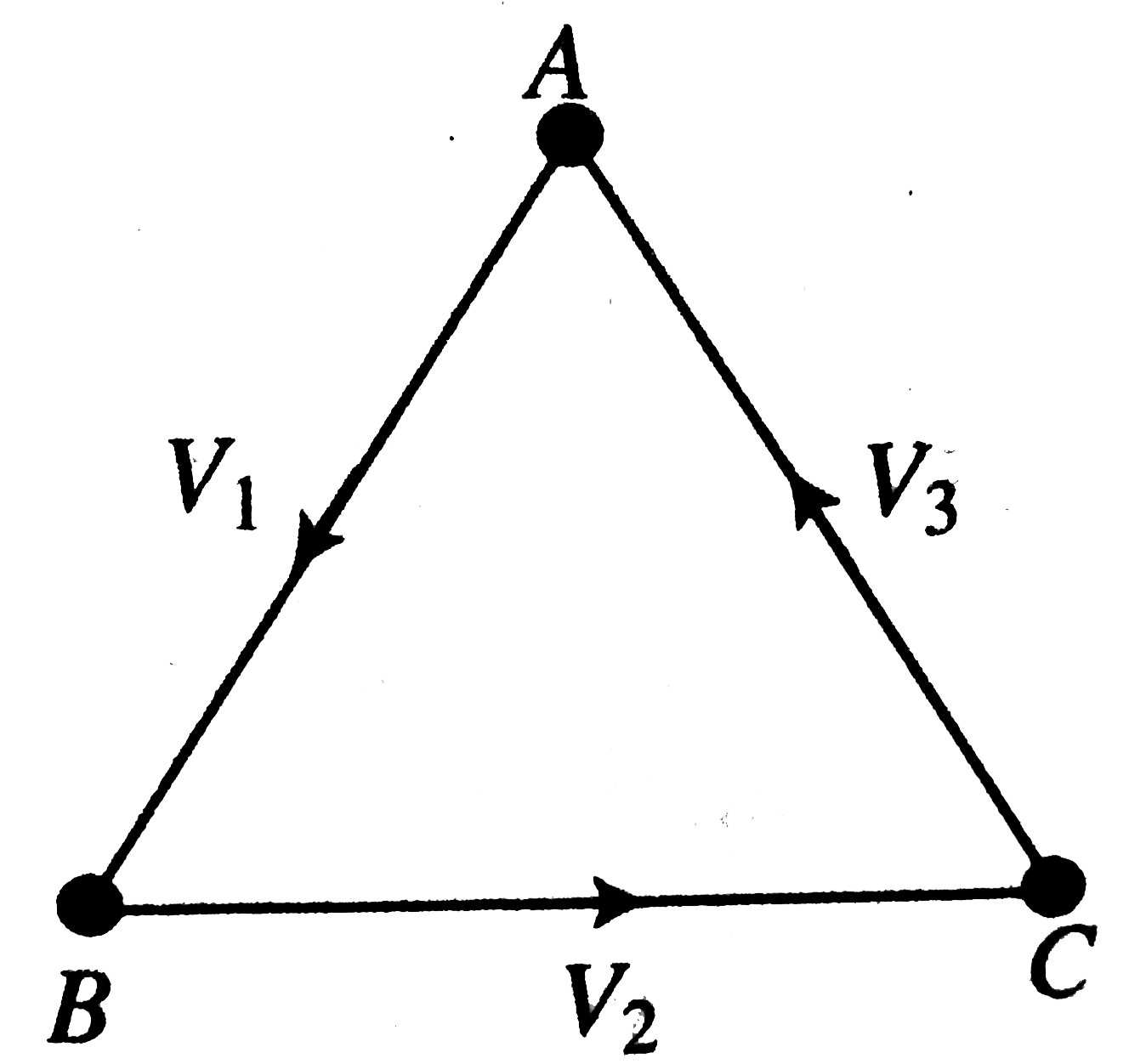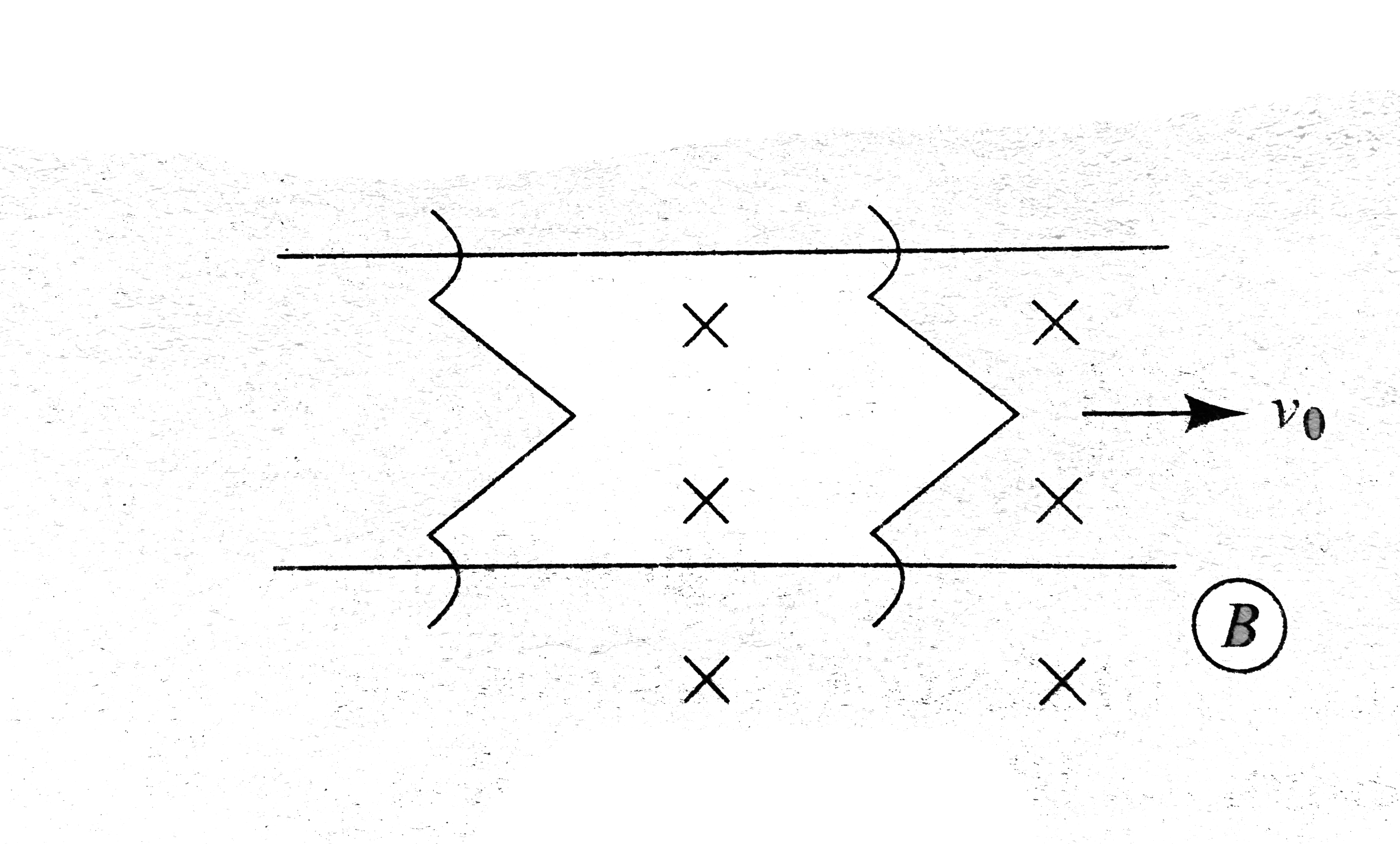There are hundred identical sliders equally spaced on a frictionless track as shown in the figure. Initially all the sliders are at rest. Slider 1 is pushed with velocity v towards slider 2. In a collision the sliders stick together. The final velocity of the set of hundred stucked sliders will be :

v99
v100
zero
v
The correct Answer is:B
Step by step video & image solution for There are hundred identical sliders equally spaced on a frictionless track as shown in the figure. Initially all the sliders are at rest. Slider 1 is pushed with velocity v towards slider 2. In a collision the sliders stick together. The final velocity of the set of hundred stucked sliders will be : by Physics experts to help you in doubts & scoring excellent marks in Class 12 exams.
Updated on:21/07/2023Topper's Solved these Questions
- CENTRE OF MASSBOOK - MOTIONCHAPTER - CENTRE OF MASSEXERCISE - Exercise - 2 (Level-I)
40 Videos
- CENTRE OF MASSBOOK - MOTIONCHAPTER - CENTRE OF MASSEXERCISE - Exercise - 2 (Level-II)
28 Videos
- CENTRE OF MASSBOOK - MOTIONCHAPTER - CENTRE OF MASSEXERCISE - Exercise - 4 Level-II
20 Videos
- Capacitance BOOK - MOTIONCHAPTER - Capacitance EXERCISE - EXERCISE -4 LEVEL II
19 Videos
- CIRCULAR MOTIONBOOK - MOTIONCHAPTER - CIRCULAR MOTIONEXERCISE - EXERCISE - 4
16 Videos
Similar Questions
There are hundred indentical blocks equally spaced on a frictionless track as shown in the figure . Initially , all the blocks are separate . Each collision is perfectly inelastic . The final velocity will be

View SolutionThree blocks of identical masses are placed on a frictionless table as shown . The centre block is at rest , whereas the other two blocks are moving directly towards the stationary block with identical speed v . The centre block is initially closer to the left block than the right one . All collisions are elastic . After long time , which of the following is true .

View Solution
Knowledge Check
Three blocks of masses m , m and M are kept on a frictionless floor as shown in the figure .The leftmost block is given velocity v towards the right . All the collision between the blocks are perfectly inelastic . The loss in kinetic energy after all the collision is 5/6th of initial kinetic energy. The ratio of M/m will be
 A14B18C2D4
A14B18C2D4Three blocks are initially placed as shown in the figure. Block A has mass m and initial velocity v to the right. Block B with mass m and block C with mass 4 m are both initially at rest. Neglect friction. All collisions are elastic. The final velocity of block A is
 A0.6v to the leftB1.4v to the leftCv to the letD0.4v to the right
A0.6v to the leftB1.4v to the leftCv to the letD0.4v to the rightThree identical spherical balls A, B and C are placed on a table as shown in the figure along a straight line. B and Care at rest initially.

The ball A hits B head on with a speed of 10ms−1. Then after all collisions (assumed to be elastic) A and B are brought to rest and C takes off with a velocity ofA5ms−1B10ms−1C2.5ms−1D7.5ms−1
Three blocks are initially placed as shown in the figure. Block A has mass m and initial velocity v to the right. Block B with mass m and block C with mass 4 m are both initially at rest. Neglect friction. All collisions are elastic. The final velocity of block A is

View SolutionFigure shows three identical blocks 1,2 & 3 each of mass m kept on frictionless surface. Block 1 is given initial velocity v0 in the direction shown. Block 1 hits block 2 and stops

View SolutionTwo balls marked 1 and 2 of the same mass m and a third ball marked 3 of mass M are arranged over a smooth horizontal surface as shown in the figure. Ball 1 moves with a velocity v1 towards ball 2. All collisions are assumed to be elastic. If M<m, the number of collisions between the balls will be.

View SolutionThree particles of equal masses are placed at the corners of an equilateral triangle as shown in the figure. Now particle A starts with a velocity v1 towards line AB, particle B starts with a velocity v2 towards line BC and particle C starts with velocity v3 towards line CA. The displacement of CM of three particle A,B and C after time t will be (given if v1=v2=v3)

View SolutionIn Fig. there are two sliders and they can slide on two frictionless parallel wires in uniform magnetic field B, which is present everywhere. The mass of each slider is m, resistance R and initially these are at reat. Now, if one slider is given a velocity v0=16ms−1, what will be the velocity (in ms−1)) of other slider after long time ? (neglect the emf self-inducetion)

View Solution
